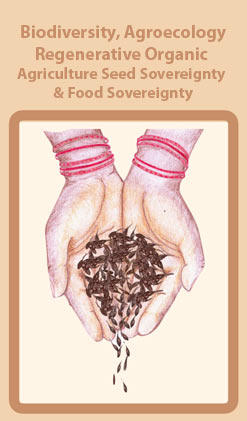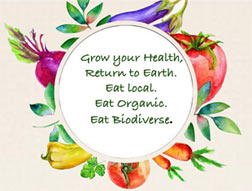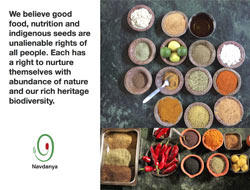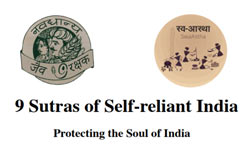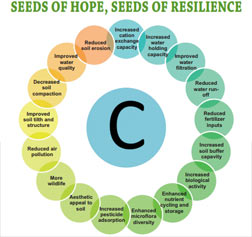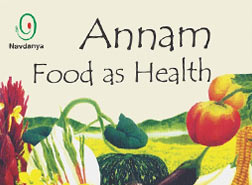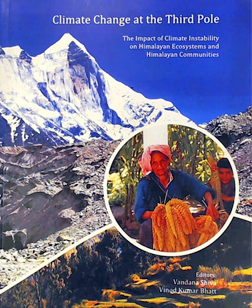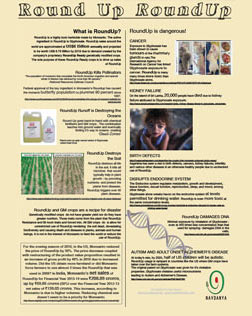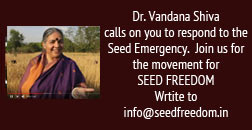Living Soil is the basis of food security, water security, climate security and livelihood security.
As early as 5000BC, the Vedas and Upanishad as well as other Indian literature mentioned soil as synonymous with land – the Mother – supporting and nourishing all life on earth.
The ancient Vedas recognized soil as basis of survival:
“Upon this handful of soil our survival depends. Care for it, and it will grow our food, our fuel, our shelter and surround us with beauty. Abuse it, and the soil will collapse and die, taking humanity with it.”
Mahatma Gandhi reminds us:
"To forget how to dig the earth and tend the soil is to forget ourselves."
Today both planet and people are facing the converging threats of climate change, natural resource depletion and ecosystem collapse. Industrial agriculture, which is supplanting the traditional forms of agriculture that have sustained human civilization for thousands of years, is a major contributor to the threats like climate change, depletion of natural resources like soil, water and biodiversity.
Today both planet and people are facing the converging threats of climate change, natural resource depletion and ecosystem collapse. Industrial agriculture, which is supplanting the traditional forms of agriculture that have sustained human civilization for thousands of years, is a major contributor to the threats like climate change, depletion of natural resources like soil, water and biodiversity.
Agriculture means the culture of taking care of the land. Unfortunately, industrial chemical agriculture has destroyed soil fertility; depleted the water holding capacity of soil; destroyed the biodiversity that provides food and nutritional security and protects the soil and contributed to 40% of the Green House Gases that are causing climate change.
Chemical fertilizers are destroying the soil food web and the living organisms that create soil fertility, soil aggregates and help conserve water in the soil. Industrial agriculture therefore contributes to deserti- cation and increasing drought, a ecting food security, livelihood security as well as making agriculture more vulnerable to climate change.
Soil provides the basis of all plant, animal and human life on Earth. A healthy soil supports plant growth, has the ability to purify air and water and safeguards animal and human health. One cannot imagine about food without soils. ere can’t be healthy food without healthy soils. Soils are vital for any ecosystem that plays a key role in the carbon cycles, storing and ltering water, improving resilience to di erent climatic conditions like oods and droughts etc.
A er oceans, soil is the second largest carbon sink on the planet. Soil can nourish carbon-based plants and maximize carbon xation while minimizing the release of CO2, reversing the e ects of climate change. All of these bene ts are dependent on the small fraction of
soil inhabited by living organisms that comprise the soil food web. A fossil fuel driven economy, including industrial agriculture, has increased the concentration of carbon dioxide in the atmosphere to levels which are triggering climate instability and climate chaos.
Industrial agriculture destroys rural livelihoods and displaces rural communities, contributing to unemployment, economic insecurity, and making society vulnerable to con icts and violence. In addition costs of production, which includes hybrid and genetically engineered seeds, chemicals and irrigation etc., are increasing with every season pushing farmers into the debt trap and to suicides. More than 300000 farmers have given their life in last two decades because of the debt in India alone.
In the recent years incidences of climate extremes and climate disasters have increased many fold. Cli- mate resilience has become an economic, ecological and social imperative.
Other than climate disasters, socioeconomic disasters are also increasing year a er year. Not only diversity of crops but productivity of land has also decreased substantially in last 4 decades due to excessive use of chemical fertilizers.
A study done by Navdanya in four states of India representing diverse agroecosystems - Uttarakhand, Sikkim, Kerala and Rajasthan (Shiva & Pandey Biodi- versity Based Prodyuctivity, An Alternative paradigm for Food Security 2006) comparing the monoculture and Biodiversity farms clearly shows that Biodiversity based organic farming system is a better choice over the monoculture farming system not only for the pro- ductivity and returns but also for climate resilience.
Navdanya’s research in 4 di erent agro-ecosystems namely - arid agro-ecosystems Western Rajasthan; Semi-arid agro-ecosystems - East–South Rajasthan; Humid agro-ecosystems in Uttaranchal Sub-humid
agro-ecosystems (Vidarbha) India proves that organic farming not only helps sequester upto 25% more carbon, in addition study results clearly showed 5-7% increase in water holding capacity, 15.8 - 17.6% increase in microbial biomass and also helped rejuvenate soil by enhancing the soil microbial activity upto 63% (Shiva and Tarafdar 2009). e study also con rms the signi cant changes in soil bene cial enzymes (phosphatases, phytase, nitrogenase) due to organic farming.
e major bene t due to organic farming under paddy cultivation in Uttarakhand observed during the study was signi cant increase in water holding capacity of the soil; organic C, available P and K build up.
Another comparative study of soil microbes and nutrients both in chemical and organic farming was done by Navdanya in 2015-16. (Appendix) To understand the soil health under continuous cultivation a er using organic and chemical inputs, a survey was conducted in di erent states namely: Uttarakhand including Navdanya farm and surrounding villages, Balasore district in Odisha, Banda district in U.P., Ajmer district in Rajasthan and Vidharba in Maharashtra
where farmers were selected who were practicing both chemical and organic inputs under di erent crops at least more than 5 years.
Detailed study of the e ect of most important crops on biological parameters like bacteria and fungi population and physico-chemical parameters like Organic matter, Total Nitrogen and available P and K was done in the few crops growing in Uttarakhand i.e. wheat, potato, garlic, mustard, chick pea, chilli and pumpkin is given below. e microbial population especially fungi, bacteria, was signi cantly higher under organic farming areas than chemical farming. ere was reduction in organic matter content of the soil under all the crops growing in chemical farming whereas increase in organic matter content under organic farming soil varies between 26-99%. A signi cantly higher total N and available K content were observed under organic farming practice. e results clearly showed that organic farming has a great role to maintain excellent soil health and nutrient content in the soil.
where farmers were selected who were practicing both chemical and organic inputs under di erent crops at least more than 5 years.
Detailed study of the e ect of most important crops on biological parameters like bacteria and fungi population and physico-chemical parameters like Organic matter, Total Nitrogen and available P and K was done in the few crops growing in Uttarakhand i.e. wheat, potato, garlic, mustard, chick pea, chilli and pumpkin is given below. e microbial population especially fungi, bacteria, was signi cantly higher under organic farming areas than chemical farming. ere was reduction in organic matter content of the soil under all the crops growing in chemical farming whereas increase in organic matter content under organic farming soil varies between 26-99%. A signi cantly higher total N and available K content were observed under organic farming practice. e results clearly showed that organic farming has a great role to maintain excellent soil health and nutrient content in the soil.
soil under organic and chemical farming systems is described below in Table 2 and Fig 5.
Healthy soils are full of biodiversity. 1 gm of soil organic soil contains 30,000 protozoa, 50,000 algae, 400,000 fungi. One tea spoon of living soil contains 1 billion bacteria which translate to 1 tonne per acre. One square cubic metre of soil contains 1000 earth worms, 50,000 insects, 12 trillion roundworms.
Humus, which is the Latin word for living soil, is also the root of “human”. We are connected to the soil. When soils are heathy, societies are heathy. When soils are sick and deserti ed, societies become sick.
Deserti cation of the soil is related to not returning organic matter to the soil. Soils rich in humus can hold 90% of its weight in water. Living soils are the biggest reservoir of both water and nourishment.
Healthy soils produce healthy plants. When the soil is healthy, with diversity of living organisms, it is able to produce all the nourishment it needs, and all the nourishment plants need.
On the Navdanya farm, organic matter has in- creased upto 99%, Zn has increased 14 %, Mangnesium has increased 14%. We did not add these as external inputs. ey have been produced by the billions and millions of soil microorganisms that are in living soils. Healthy soils produce healthy plants. Healthy plants are then able to nourish humans.
On the other hand, chemical farming has led to decline in soil nutrients, which translate into a decline in the nutrition content of our food.


